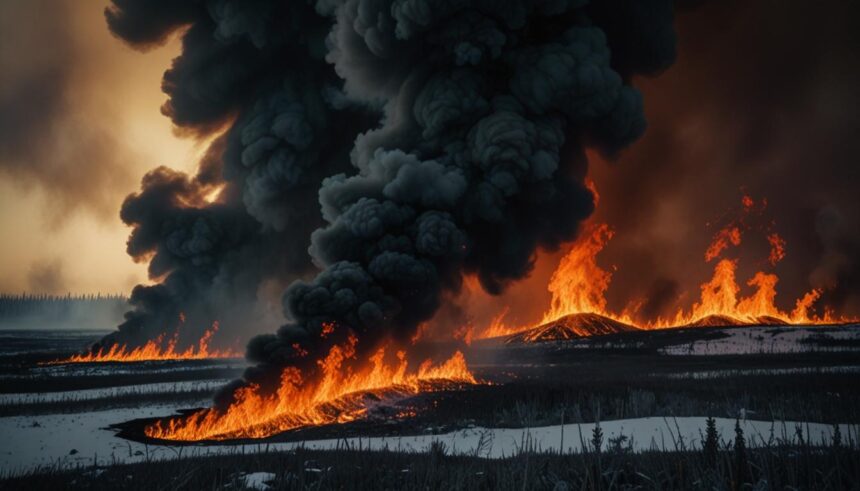Intense wildfires in the Arctic Circle in June have led to the release of significant carbon into the atmosphere, with most fires located in the Sakha Republic, Russia. The fires, fuelled by hotter and drier conditions attributed to climate change, have spread north and are impacting tundra and boreal forests, contributing to greenhouse gas emissions. This year’s fires are compared to those of 2019 and 2020, marking a notable increase in extreme wildfires over the past two decades.
Intense wildfires in the Arctic Circle have released significant amounts of carbon into the atmosphere this June, according to EU scientists. Data from the Copernicus Atmosphere Monitoring Service (CAMS) indicate that most fires are in the Sakha Republic, Russia.
The fires are attributed to hotter and drier conditions in the Arctic, fueled by climate change. These blazes are spreading north, affecting tundra and boreal forests, and releasing greenhouse gases from carbon-rich soil. Mark Parrington from CAMS noted that this year’s fires mirror those of 2019 and 2020, marking the largest increase in extreme wildfires over the past two decades.
By June 24, more than 160 wildfires had burned nearly 460,000 hectares in the Sakha Republic, according to Andrey Konoplev, the region’s deputy minister of ecology, nature management, and forestry. CAMS reports that this year’s carbon emissions from Arctic fires are the third highest in two decades, at 6.8 megatonnes.
Wildfires in the Northern Hemisphere generally peak in July and August. The Arctic’s climate changes have global implications, significantly impacting the Earth’s climate system. Gail Whiteman, from the University of Exeter, emphasized the global risks posed by changes in the Arctic and the increasing frequency of Siberian wildfires.





